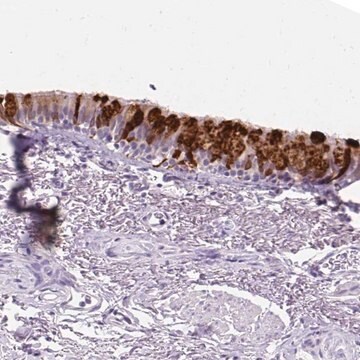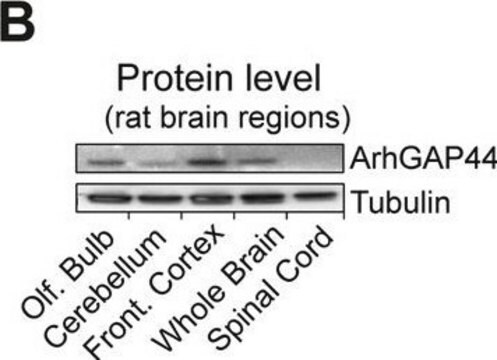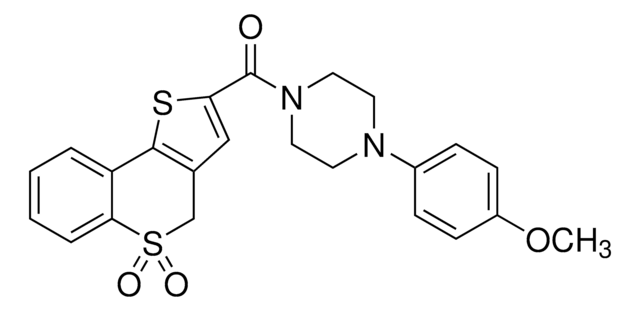ABS1673
Anti-Uteroglobin
serum, from goat
Synonym(s):
Clara cell phospholipid-binding protein, CCPBP, Clara cells 10 kDa secretory protein, CC10, PCB-binding protein, Secretoglobin family 1A member 1, Blastokinin
About This Item
IHC
WB
immunohistochemistry: suitable
western blot: suitable
Recommended Products
biological source
goat
Quality Level
antibody form
serum
antibody product type
primary antibodies
clone
polyclonal
species reactivity
mouse
species reactivity (predicted by homology)
rat (based on 100% sequence homology)
technique(s)
immunofluorescence: suitable
immunohistochemistry: suitable
western blot: suitable
NCBI accession no.
UniProt accession no.
shipped in
ambient
target post-translational modification
unmodified
Gene Information
mouse ... Scgb1A1(22287)
rat ... Scgb1A1(25575)
General description
Specificity
Immunogen
Application
Immunofluorescence Analysis: A 1:1,000 dilution from a representative lot detected Uteroglobin in mouse lung tissue. (Courtesy of Dr.Barry Stripp at Cedars-Sinai Medical Center, Los Angeles, CA).
Immunohistochemistry Analysis: A representative lot detected Uteroglobin in adult mice alveoli (Rawlins, E.L., et. al. (2009). Cell Stem Cell. 4(6):525-34).
Signaling
Quality
Western Blotting Analysis: A 1:500 dilution of this antibody detected Uteroglobin in 10 µg of mouse lung tissue lysate.
Target description
Physical form
Storage and Stability
Other Notes
Disclaimer
Not finding the right product?
Try our Product Selector Tool.
Storage Class Code
12 - Non Combustible Liquids
WGK
WGK 1
Certificates of Analysis (COA)
Search for Certificates of Analysis (COA) by entering the products Lot/Batch Number. Lot and Batch Numbers can be found on a product’s label following the words ‘Lot’ or ‘Batch’.
Already Own This Product?
Find documentation for the products that you have recently purchased in the Document Library.
Our team of scientists has experience in all areas of research including Life Science, Material Science, Chemical Synthesis, Chromatography, Analytical and many others.
Contact Technical Service







